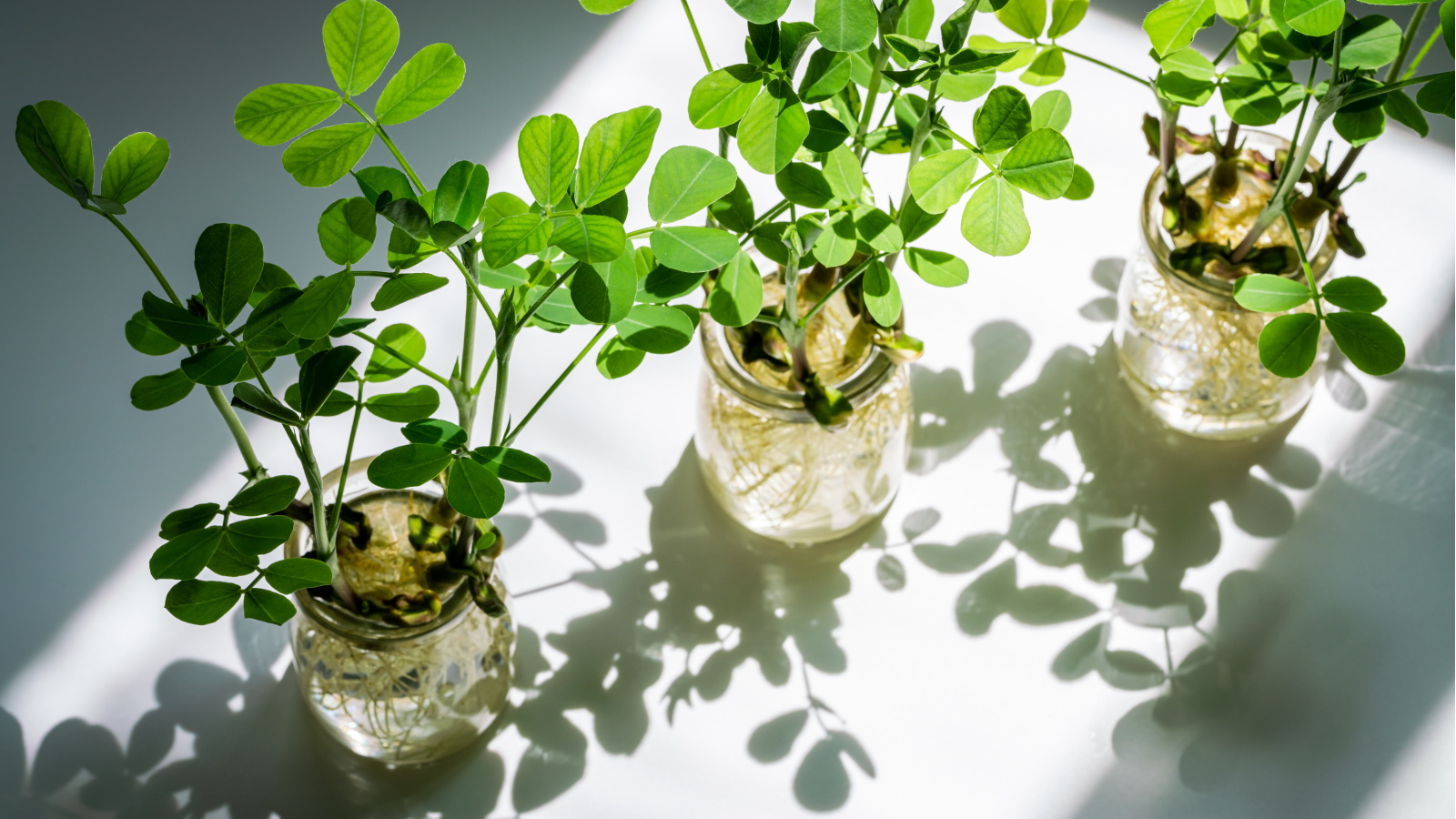
As an avid indoor gardener, I'm always looking for new ways to grow different plants in my home, and hydroponic gardening opens a world of possibilities for indoor growing. Many others are also enjoying this realization, as hydroponics now play an integral role in creating thriving indoor gardens.
Another reason an increasing number of indoor gardeners are choosing to incorporate hydroponic gardening in their homes is because it's a sustainable solution to growing crops, houseplants, and more, that uses less resources. Of course, it can also make for an attractive feature in our homes and is certainly a conversation-starter among guests.
Whether you're new to hydroponics or have been practicing it for some time, there's no arguing it can be hard to keep up with the everchanging technology behind it. With new ideas always emerging, it can also be hard to know which hydroponic ideas actually work. To help navigate this noise, I've done the research for you. Here, are the only hydroponic gardening trends I think are worth shouting about this year.

5 innovative hydroponic gardening trends
For 2025, hydroponic gardening trends reflect ideas of maximising space, sustainable DIY hydroponic gardens, and new innovation. It can be tricky to know where to look when so many fresh ideas arrive on scene, which is why I've narrowed the best hydroponic gardening trends down to five that I promise won't waste your time or money.
1. Vertical hydroponic gardens

Vertical gardening has become hugely popular in recent years, both as a solution for small gardens and for the aesthetic value it offers. Now, hydroponic gardens are also taking it on board.
There are plenty of ways to create a living wall and using a vertical hydroponic garden is a unique twist to add. It reflects some modern hydroponic technology used in agricultural farms, where hydroponic towers are often set up with luscious edible crops spilling out.
It isn't just for the sake of space-saving either, as vertical hydroponics are thought to use less water than horizontal gardens. This is partly thanks to the fact it's easier to recirculate excess water.
To create this at home, indoor growing expert and owner of Perfect Plants Nursery, Alex Kantor suggest repurposing PVC pipes - like these from Walmart. Drill some holes in the pipes to hold the plants' net pots and use a water pump (from Amazon) to circulate the water. Don't forget to add a container on each end to create a water reservoir.
Alternatively, there are tower hydroponic systems available online:
Holding up to 30 plants, this hydroponic tower has an automated water distribution feature that disperses water evenly to all plants.
2. Hydroponic leafy crops
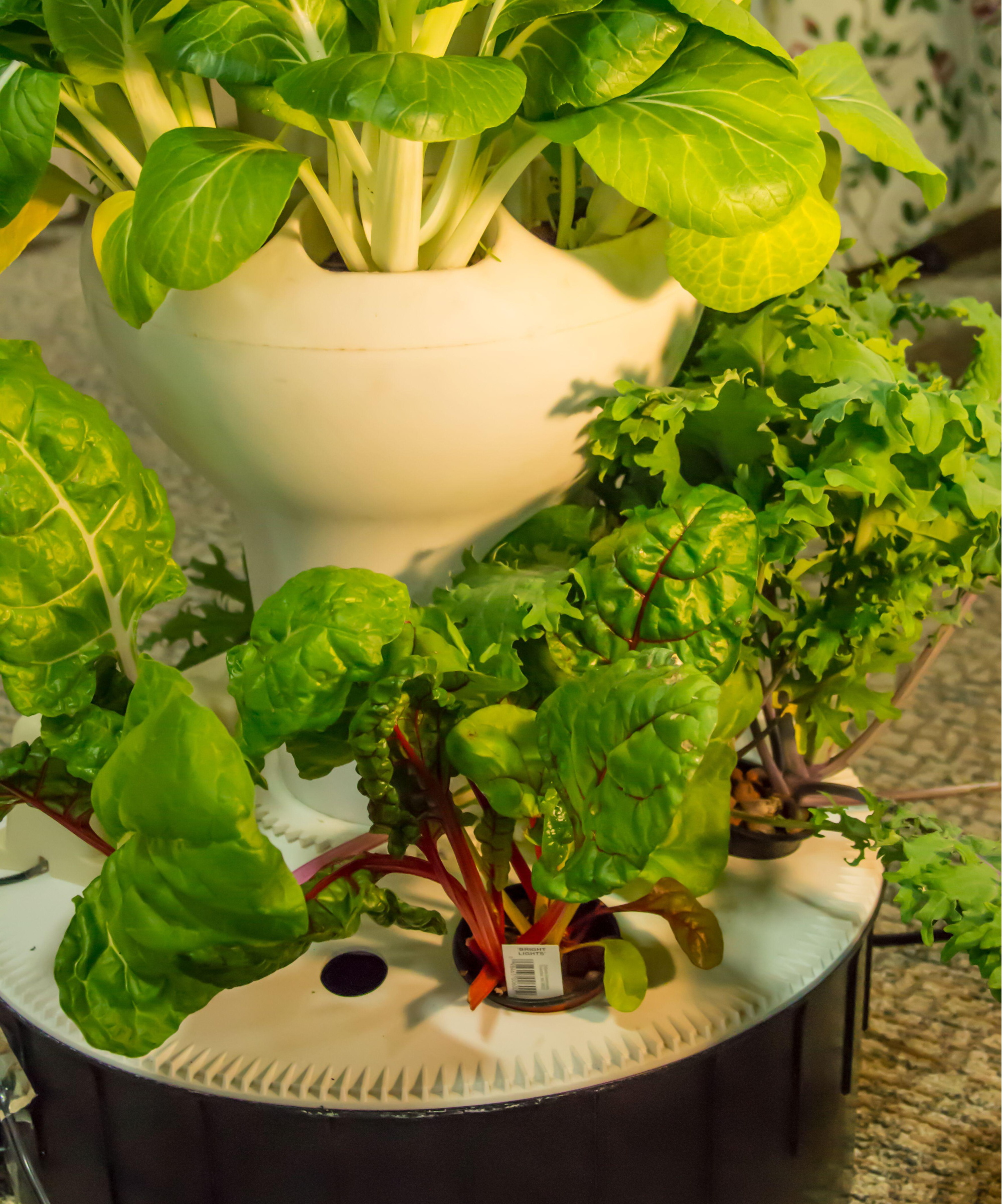
There are a wide range of uses for hydroponic gardens, but they are predominantly used to grow crops more sustainably and to have a bountiful indoor kitchen garden.
It's no surprise, therefore, that growing leafy crops hydroponically will remain popular this year, as these edible plants are particularly easy and quick to grow in water.
Think growing lettuce indoors, growing spinach, and growing kale, among others. Other edibles like indoor herb gardens are also likely to make the transition to being hydroponically grown, as well as growing microgreens indoors.
If you're keen to get started on an indoor hydroponic vegetable garden, Burpee have a range of vegetable seeds to choose from.
3. Mismatched hydroponic vessels
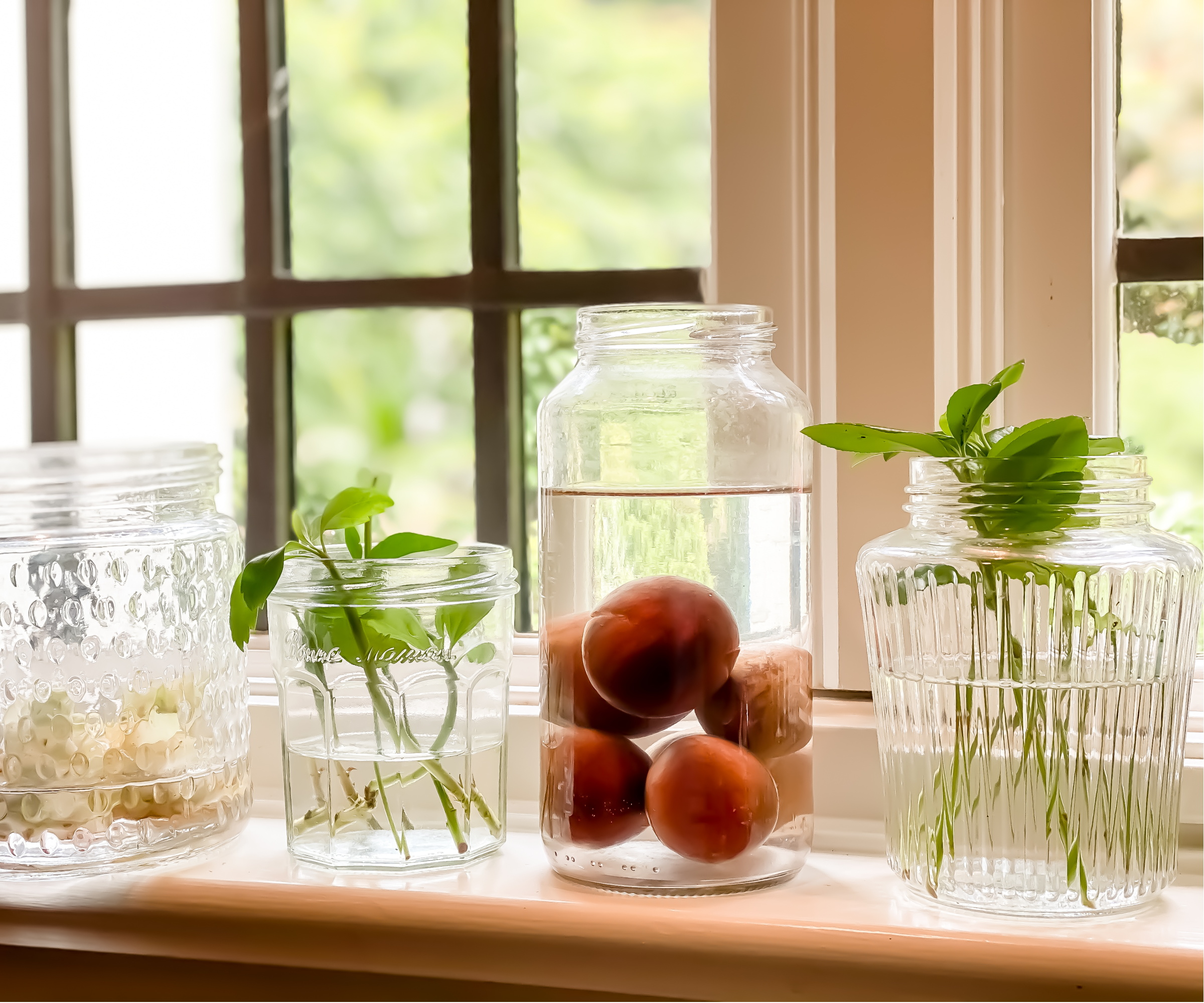
Perhaps the most basic and affordable form of a hydroponic garden: 'You can use a glass jar for just one plant,' says Annette Hird, vegetable growing expert at Easy Urban Gardens.
Many indoor gardeners try this method out when first experimenting with hydroponics, simply using water in a jar to root plants. Not only is it unlikely this easy method will disappear any time soon, 2025 is the year it's viewed as a beautiful feature for indoor gardens.
In particular, an eclectic collection of mismatched glass vessels will be taking center stage. Think random repurposed food jars and vintage thrifted glass vases paired together to create a effortlessly attractive display.
It's a fun Mason jar craft project to take on and a good solution to repurposing spare jars you may have accumulated over the years.
Top tip: 'You can paint the outside of the jar a dark color so that light can't get in. This will keep the solution clean and prevent algal growth,' Annette advises. 'Keep the base of the jar clear so you can monitor root growth and when the water needs topping up,' she adds.
These 12 Mason jars are perfect for setting up a small hydroponic garden.
4. Hydroponic houseplants
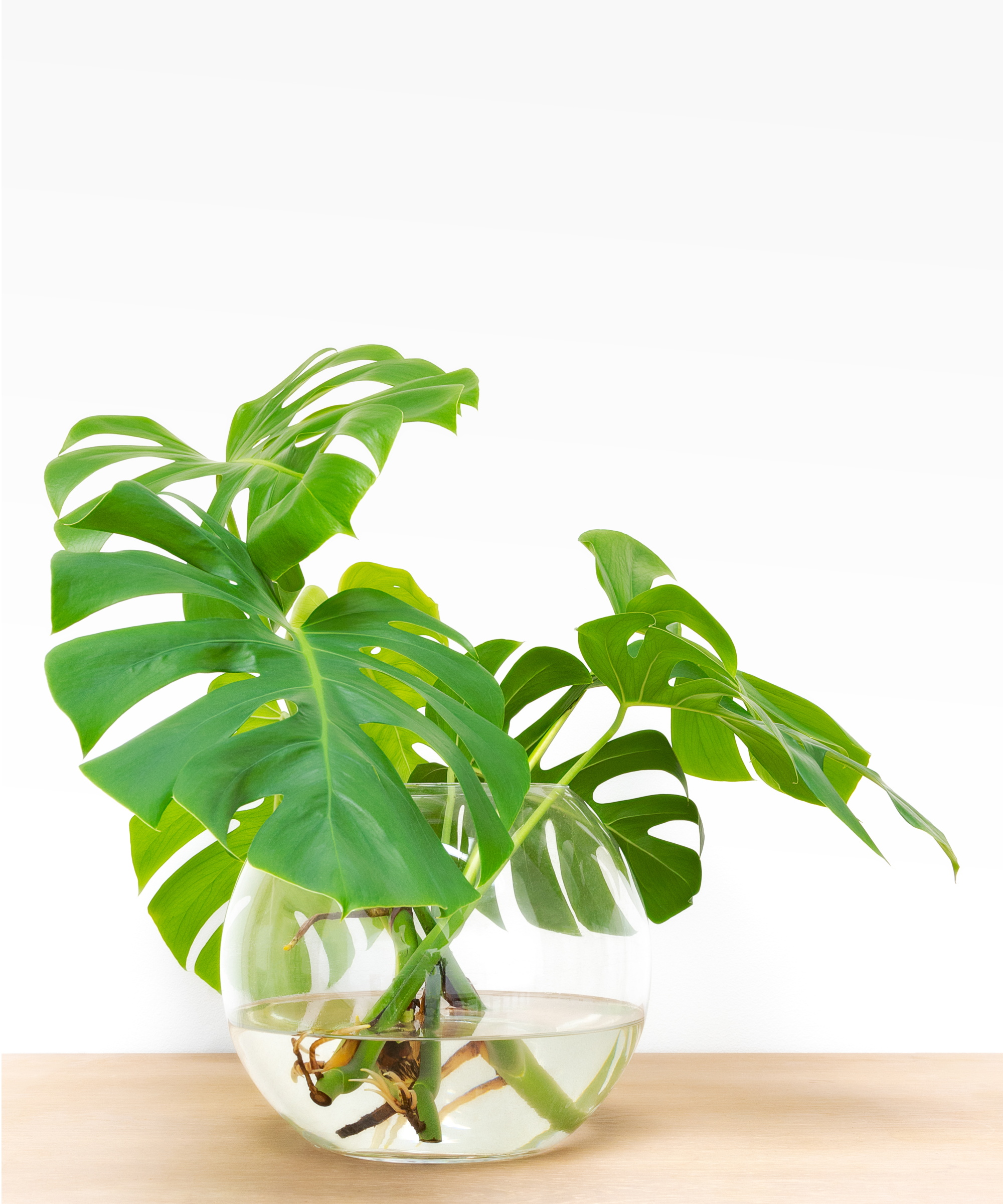
Hydroponic gardening trends meet houseplant trends this year with hydroponic houseplants.
Many plants don't rely on soil for plant nutrients - largely epiphytic types, like growing a monstera in water or growing orchids in water - making it possible to grow them in a hydroponic set-up.
To elevate the appearance of your hydroponic houseplants, choose clear vessels to show off their roots. You could even use this stylish fishbowl terrarium from Anthropologie.
Be aware not all plants can grow hydroponically, however, so it's always worth researching your specific plant's growing requirements before setting it up in a water culture home.
Another option is using hydroponics to propagate the easiest houseplants to grow from cuttings. Using a propagation station - like this hanging one from Amazon - you can have temporary hydroponic plants as the cuttings root in water.
When growing houseplants hydroponically, take care to avoid hydroponic gardening mistakes by regularly changing out the water. 'Water should be changed frequently. Higher light levels necessitate frequent changes due to algae blooms,' explains horticulture expert and director of new product development at Terra Nova Nurseries, Chuck Pavlich. This will also help keep common houseplant pests and diseases at bay.
5. Fogponic gardening
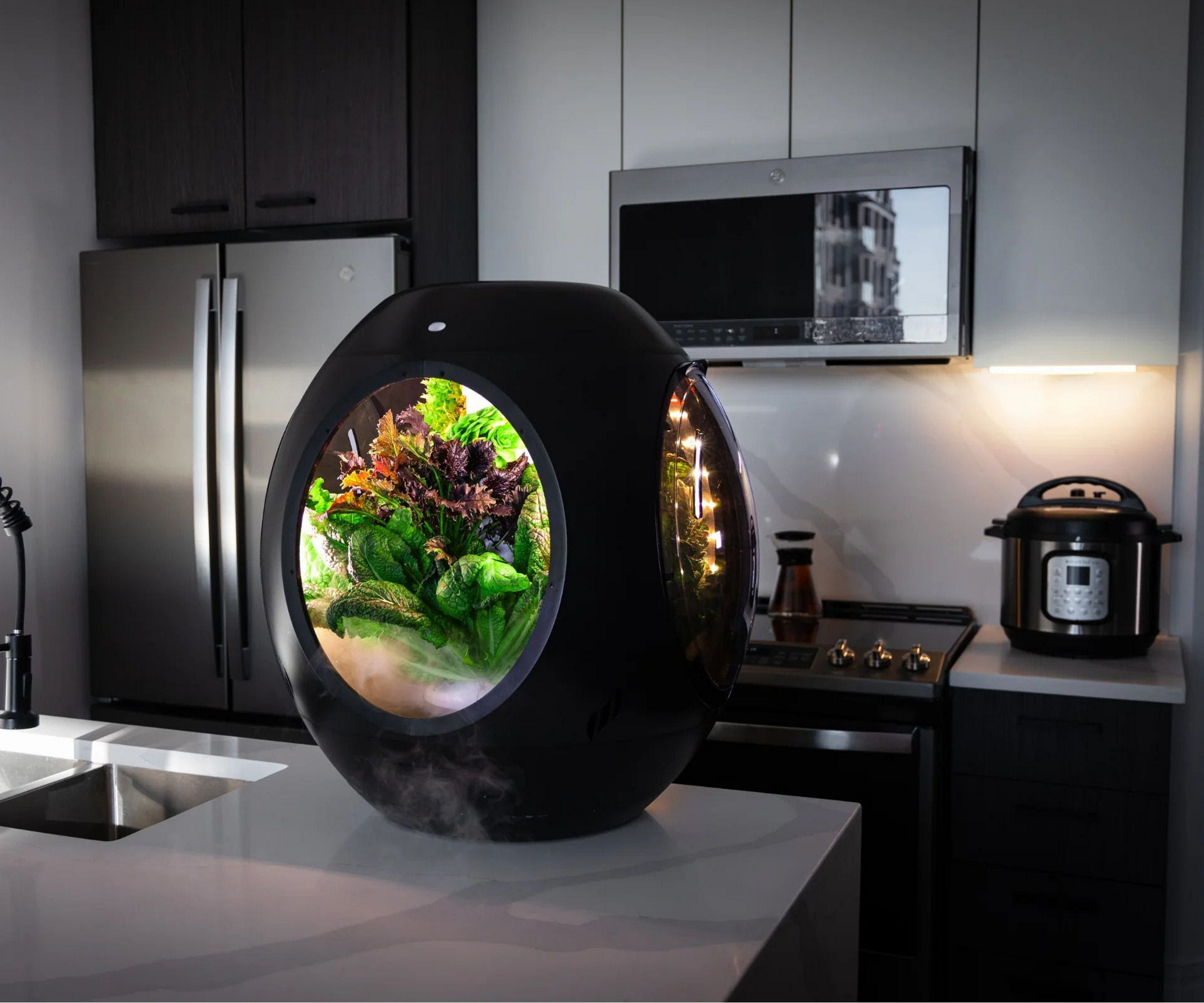
This one technically isn't hydroponics, but it is a similar science inspired by hydroponic gardening - fogponics.
Fogponics is an evolution of aeroponics developed by NASA. It provides essential plant nutrients to plant roots via mist. Just like hydroponics, this uses less resources to grow plants and provides a cleaner gardening experience by growing plants and houseplants without soil.
The image above shows Plantaform's new fogponic Smart Indoor Garden, which is available at Amazon. All you have to do is add water and a nutrient solution which is then turned into mist to nourish the plants. Just like hydroponic systems, it also includes lighting features to support plant growth.
As new technology, there's no doubt we'll see more from fogponics in time to come, providing a new way for gardeners to maximise their space when growing indoors.
FAQs
How does hydroponic gardening work?
Hydroponic gardening refers to growing plants without soil. Instead, plants are cultivated in coco coir or rock wool and their roots are then submerged in water. In order for hydroponic gardening to be effective, the water does need to be nutrient-rich. For this reason, many hydroponic gardeners use hydroponic fertilizers (available at Amazon). Some hydroponic gardens also feature water pumps to circulate the water and keep it clean, as well as grow light to support plant growth.
These hydroponic gardening trends prove there's still so much scope for this gardening technology to develop. New ideas are bound to emerge for years to come. For now, try taking on one of these ideas to up your hydroponic gardening game.
Once you have decided which type of hydroponic garden to have in your home and which plants to grow hydroponically, make sure to familiarize yourself with this gardening practice to ensure success. Don't forget to also consider the pros and cons of hydroponic gardening before jumping in, as you may realise other gardening methods are much more suited to your gardening goals this year.







